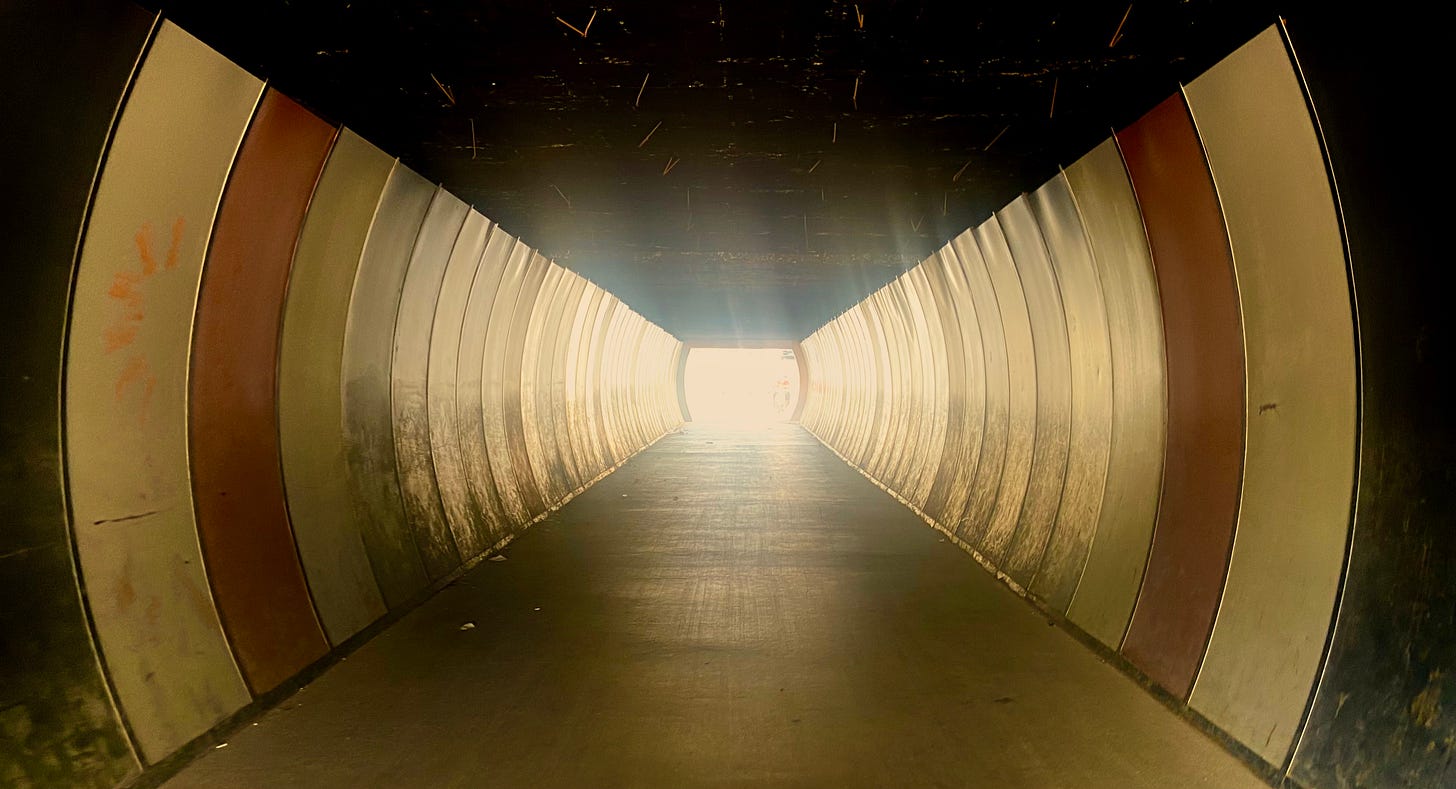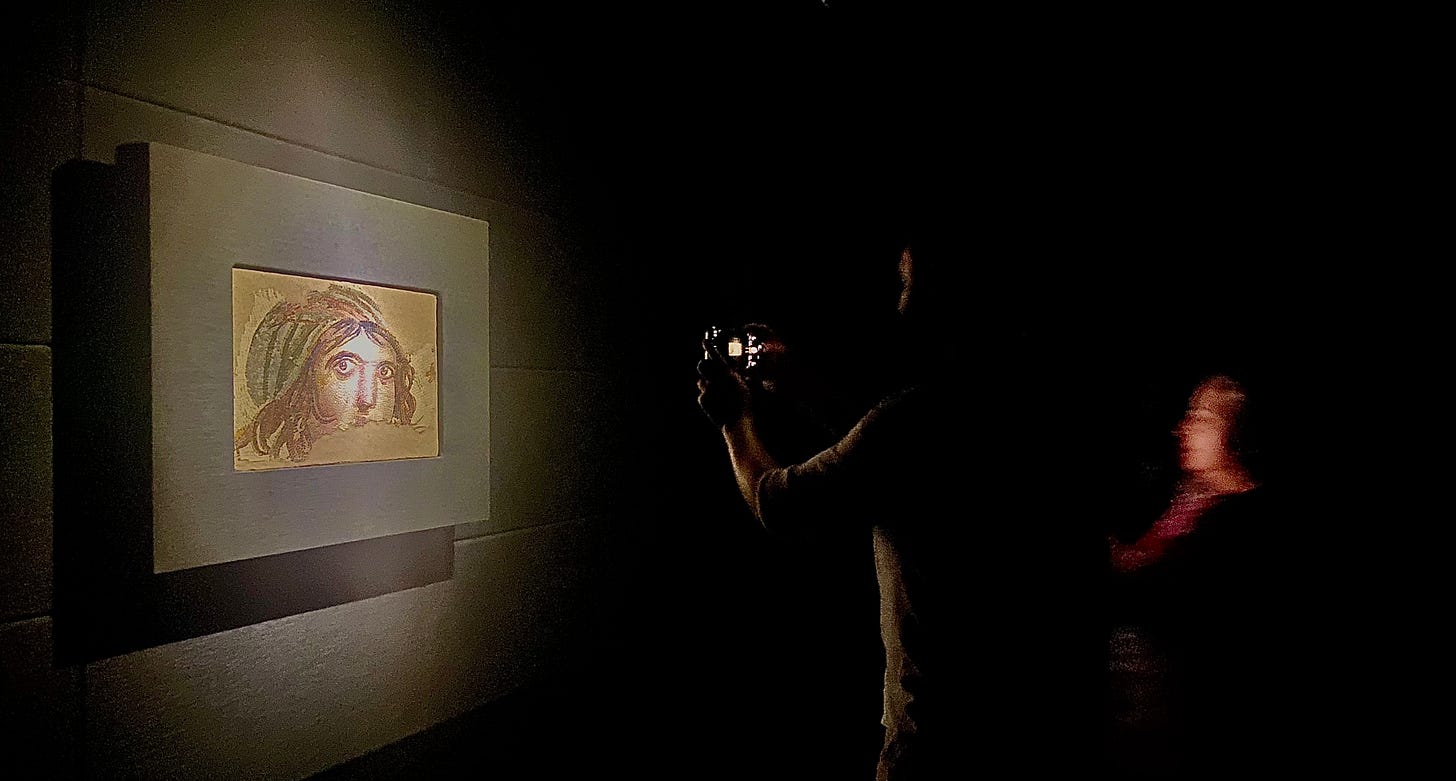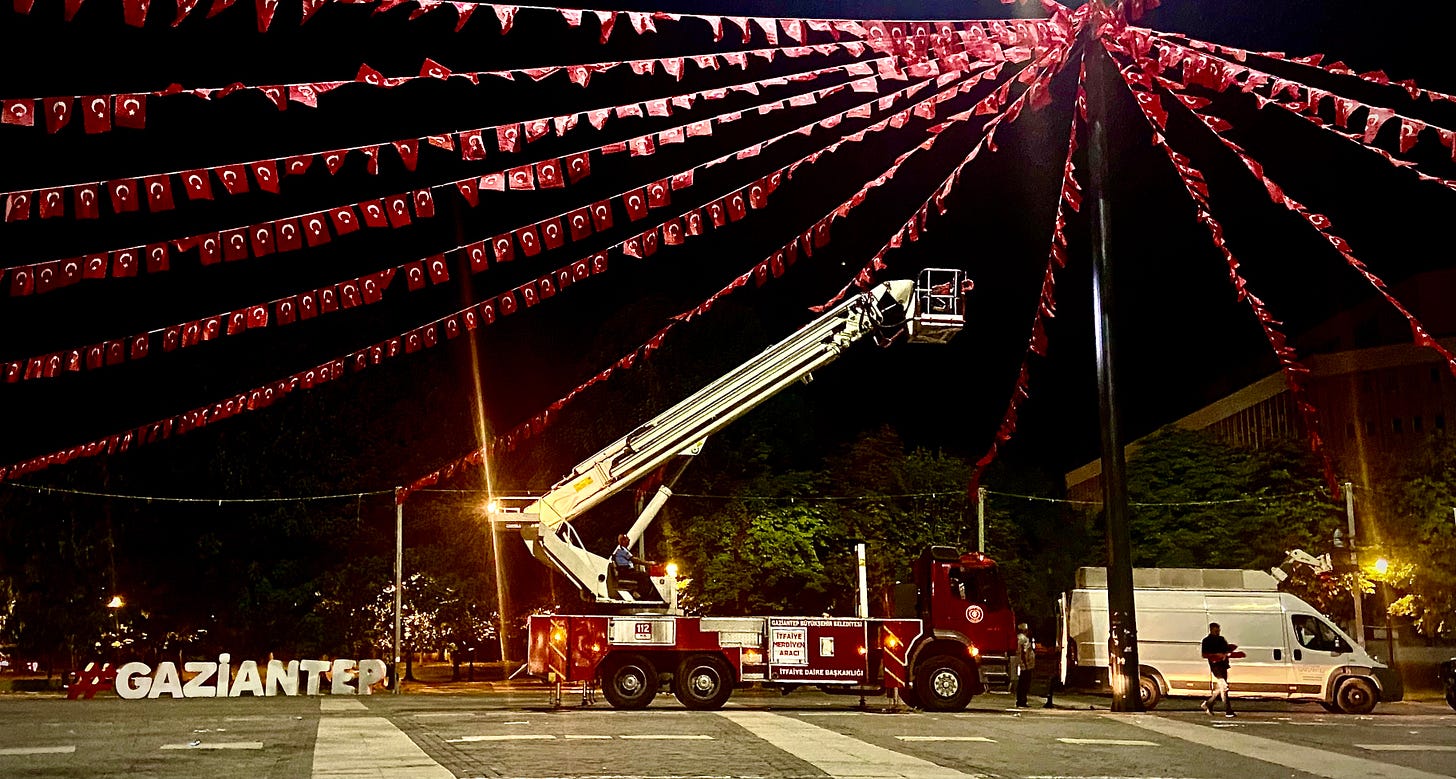Gaziantep: The City of Veterans
The Mosaic Museum, Delicious Food and an Epic War Story
My stay in Gaziantep was a quick one.
I spent more time in Cappadocia than initially intended, so by the time I arrived in the big regional city of Antep, I knew it would not be for long. There were a few items, however, that were necessary to check off the list:
Gaziantep Cuisine — specifically, the kebab
Zeugma Mosaic Museum — the largest mosaic collection in the world
Much of Gaziantep was flattened by the 2023 earthquake (I was in Jerusalem at the time of the shaking) and rebuild efforts are seen throughout the city with new apartment buildings popping up everywhere.
Arriving in Style
Per my usual routine, I took a night bus from the previous location and arrived early in the morning. From the otogar (bus station) I found a dolmuş (local mini bus) and made my way to the city center. When I was in walking distance of the budget hotel I spotted on Booking.com, I hopped off.
I left my bag in my small corner room and ventured into the unknown city.
My first introduction to delicious Gaziantep fare first took place during my month-long stint in Selçuk when a witty waiter explained to me that Gaziantep is the Texas of Turkey: they both know barbeque.
The three scrumptious meals I enjoyed in Gaziantep would only affirm what I had previously experienced. Next door to my hotel, I also found the best turnip juice (a Turkish specialty) in all of Turkey. And, even though the food and drink was delicious, this was not my favorite part of the sprawling city.
Mosaic Museum: Piecing Together History
A river/drainage ditch runs through the city center with highways running along both sides of the riverbank. Navigating this obstacle by foot meant doubling back on my journey a few times before finally reaching the museum that puts Gaziantep on the map.
Truly, Zeugma is a world class museum containing 1700 m2 of tiny tiled mosaics dating back thousands of years. Archaeologists discovered most of these mosaics twenty years ago while excavating the remains of the city of Zeugma, a city founded by a general of Alexander the Great and destroyed in the 3rd Century.
For someone—like myself—who spent the better part of a decade digging into ancient mythology across cultures, the tiles meticulously pieced together in this three-story museum are fascinating. Obtaining an understanding of the belief systems forming this culture also helped me put more of the New Testament in context.
The museum showcases Hellenistic Greek and Roman mosaics centered around the town of Zeugma, believed to have been founded as Seleucia by Seleucus I Nicator, who served as a military officer in Alexander the Great's army and who later established the Seleucid Kingdom.
This region was rife with false gods. As I walked among them, I couldn’t help but think of how these same gods are present in our modern society, often not in physical form, but manifested in other ways. Many people have elevated sports or beauty or knowledge or war or sex to the forefront of their mind.
There’s a tiled motif in this museum for each of those idols.

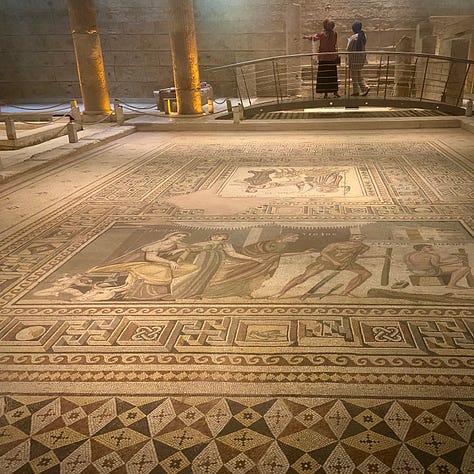
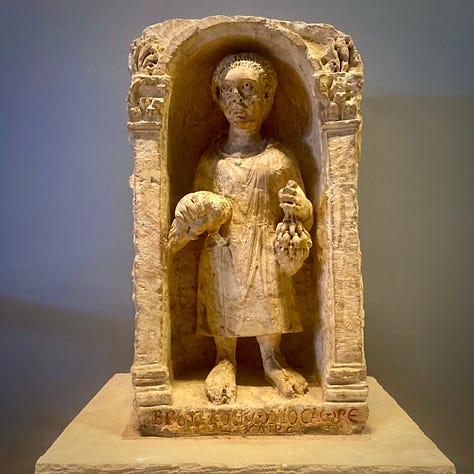
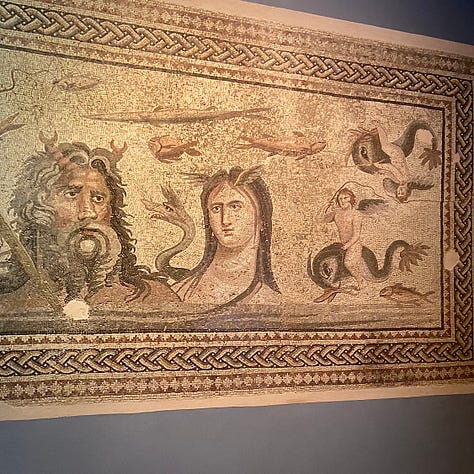
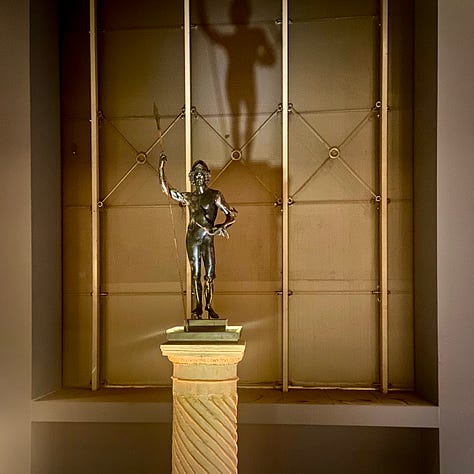
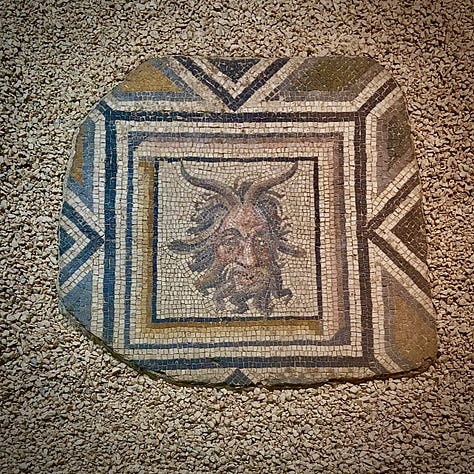
The Gypsy Girl
One set of tiles stands out above all the others, not because of the beauty, intricacy or size of the artwork, but because of the story that accompanies it.
The treasures found in this museum, including the mosaics, remained largely unrecognized until 2000, when artifacts began to surface in museums. This renewed interest coincided with plans for new dams on the Euphrates River, which threatened to flood much of Zeugma.
Prior to all the attention on this riverside city, several wall sections had already been looted. Those pieces were smuggled out of the country in the 1960s and purchased by Bowling Green State University in Ohio, which displayed them until 2012 when their true provenance was established. Turkey asked for their return and in 2018 the haunting eyes of the Gypsy Girl were given their own special room in the museum.
The Gypsy Girl has become the unofficial symbol of Gaziantep.
My audio-guide of the Mosaic Museum ended as my phone powered down shortly after staring into the eyes of the Gypsy. I continued wandering through unending tile work for another hour until the museum closed.
A Turkish coffee and phone charge were enjoyed in a nearby shop before I made my way back across town to the specific kebab joint recommended by museum staff, police officers and hotel clerks. It was delicious.
Kurdish music filled the air from the bar next door as men held pinkies and bobbed in rhythm with one another in the traditional dance. I remember this dance from my time in Cyprus the year before and look forward to dancing sometime soon, but not tonight as I’m exhausted.
A firetruck caught my eye on my stroll home. They were putting up long strands of Turkish flags in the main city square near my hotel. I asked Abba what He wanted me to know. As I walked on, I heard a clear message: “visit that place.”
My Assignment in the City of Veterans
“That place” was the war museum just across the street from the fire truck.
Another museum? But I just saw the largest mosaic museum in the world. Why another museum? I wondered these thoughts as I drifted off to sleep.
The next morning, I awoke refreshed and headed straight for the museum. It was closed. In typical Turkish fashion it would not open until mid-morning. Nothing too early here. I wandered the streets for an hour taste-testing different coffees before making my way down a winding side alley that landed me back at the museum.
A group of women dressed in black staff-attire sat outside chatting. We still had another half hour before the museum opened, so I asked the women for a coffee. When they told me they didn’t have coffee, I pointed out that they were all drinking coffee. What they meant was that the Museum cafe wasn’t open.
After a few minutes of Turkish banter, one of the older women asked the youngest to prepare me a coffee—on the house. This was the first moment when I realized my Turkish was becoming somewhat conversational. I patted myself on the back as I sipped the bitter coffee. Not too shabby.
I tossed the paper cup in the bin and they opened the museum early, just for me.
War is Coming
Gazi means veteran in Turkish. Antep is the ancient name of the city.
This war museum narrates the epic and tragic tale of Gaziantep's resistance against occupation during World War I. Visitors are greeted at the entrance by a field artillery piece and sections showcasing weapons, gunpowder, and primitive defensive tools used during the resistance. The story of Gaziantep’s two-year struggle is presented chronologically, featuring personal belongings and photographs of local heroes.
As I descended into the underground tunnels, I encountered somber displays of war photographs and funeral scenes, serving as a poignant reminder of the harsh realities of war and the city’s resilient spirit. After the war, the city faced two years of intense struggle against enemy troops, ultimately achieving independence. In recognition of this valor, the Turkish Parliament gave Antep the name “Gaziantep”—the city of veterans—because of its heroic last stand as Turkey was being occupied.
My visit to the War Museum was unlike most other peoples. Firstly, I was inside all alone. Secondly, in the first room downstairs, I heard the Lord tell me to take out my camera and begin recording. The museum formed the backdrop to a word that I will release to the nations early November.




